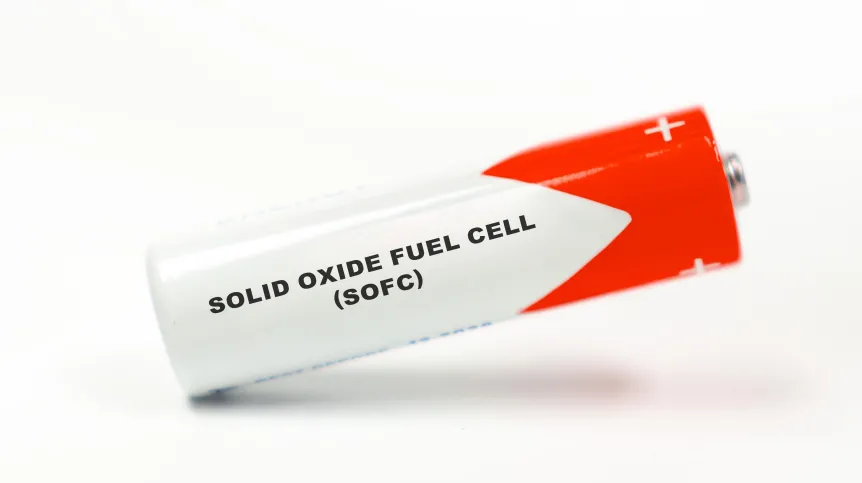
A method that significantly enhances the efficiency and lifespan of solid oxide fuel cells (SOFCs) has been developed by researchers at AGH University of Science and Technology in Kraków, in collaboration with teams from Denmark and China.
The innovation combines a microaddition of material with negative thermal expansion (NTE) and a nanofibrous cathode structure.
“One part of the electrode pulls while the other relaxes, and the entire structure adapts better to the electrolyte,” the researchers said.
SOFCs are high-temperature electrochemical power plants that convert chemical energy directly into electricity without combustion.
“They allow high efficiency and low emissions,” the team noted, “but they have an Achilles’ heel — different layers expand at different rates at hundreds of degrees Celsius. With each start-up and cooling, this causes stress, microcracks, and performance drops, particularly at the cathode-electrolyte interface,” the researchers added.
Their solution is surprisingly simple: adding a small portion of a substance that contracts as temperature rises, known as negative thermal expansion, to the cathode material. The cathode is also structured as a dense mat of nanofibers, creating a fabric of thin threads with a large reaction surface and efficient oxygen transport paths.
The results are substantial. At around 800°C, NTE-doped cathodes experience a more than 50% decrease in polarization resistance compared to the original material. A single cell achieves around 0.85 watts per square centimetre of peak power — a 40% increase.
The expansion mismatch between cathode and electrolyte drops from levels of several dozen percent to near zero, reducing the risk of cracking during heating and cooling cycles. In other words, the cell operates more efficiently and for a longer time.
Their study, published in Applied Catalysis B: Environment and Energy (https://doi.org/10.1016/j.apcatb.2025.125950) explains the origins of this unusual thermal behavior. Spectral analysis shows changes in crystal lattice vibrations with temperature, and theoretical calculations indicate that the NTE addition stabilizes the structure and promotes oxygen transport under operating conditions.
“This provides a design formula: select the NTE portion that balances the thermal swelling of the cathode without quenching its activity,” the researchers said.
The combination of thermal tailoring and nanoscale architecture is technologically attractive because it is scalable and does not require exotic components. It operates precisely where support is needed — at the interface between cathode and electrolyte. The researchers noted the potential applications are wide-ranging, from heating plants and hospitals to industrial facilities and transportation.
“Solid oxide fuel cells produce electricity without a flame, reducing NOx and SOx emissions, and hydrogen or biogas operation makes them very clean,” the team said. Even when fueled by natural gas, the amount of CO₂ produced is much lower than in conventional generators, and cogeneration allows heat recovery.
Several companies already commercially produce SOFCs, including Bloom Energy in the U.S., Kyocera in Japan, and SolydEra and Elcogen in Europe.
In Poland, early manufacturing initiatives are emerging: HydrogenTech in Kraków commercially produces solid oxide fuel cells and provides testing facilities for hydrogen projects, while laboratory-scale cells are being developed at the Institute of Power Engineering – National Research Institute.
Krzysztof Petelczyc (PAP)
kmp/ bar/
tr. RL













